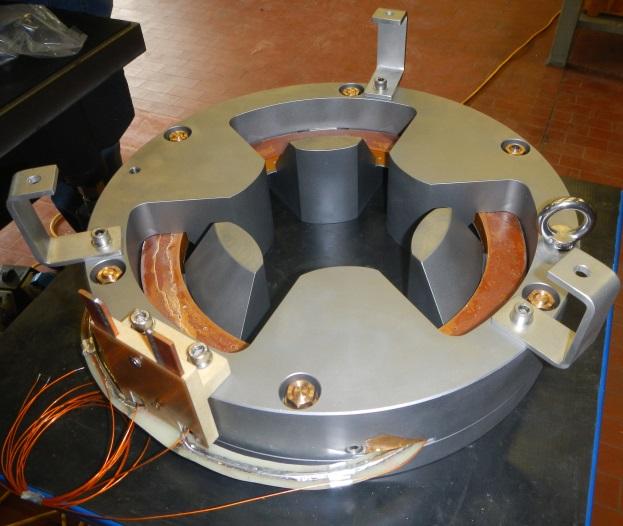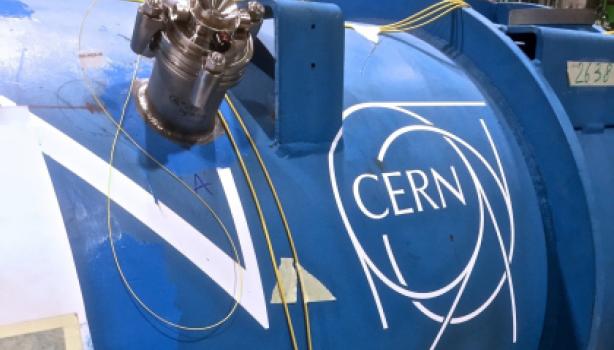In September, the Superconducting Magnet Team at INFN-LASA completed the assembly and test of the so called “Round Coil Superferric Magnet” (RCSM) corrector. This unconventional magnet creates the desired multipole field through a three dimensional shaping of the iron, excited by simple round coils. The RCSM realised at LASA is also particularly innovative for using a coil of MgB2 (Magnesium di-Boride based superconductor). The MgB2 superconductor, which is prone to degradation if it is wound with relatively low curvature radius, has demonstrated now to be a practicable option in accelerator magnets with this kind of configuration.
Figure 1: Assembly of the MgB2 superconducting coils in the iron pole and yoke.
G. Volpini (INFN) and E. Todesco (CERN) had considered the RCSMas a possible option for the high order corrector magnets of the interaction regions of the HL-LHC, to be installed in 2025.. However, computations showed that, due to the necessity to increase efficiency in terms of longitudinal space available for the corrector-package, the classical superferric option with Nb-Ti and standard two dimensional iron shaping was preferred. Nonetheless, the MgB2 RCSM prototype magnet has remained in the development line to explore the manufacturing aspects of this design, and to have a MgB2 magnet available for high energy accelerators, a prima for this technology. Last year a single coil conductor, wound with MgB2 produced by Columbus Superconductors (Genova), was tested in LASA without the iron yoke, and the outcome was reported in Accelerator News 24.
Now an entire module of the magnet, composed of poles, yoke and a single round coil, has been completed, and the test demonstrated the feasibility of this kind of technology. The magnet, cooled at 4.2 K with liquid helium, reached without any training quench the design current (“ultimate current”, 161 A) and demonstrated to be able to operate stable for one hour at the ultimate current. The coil was then energised to larger currents to investigate the limiting current, which resulted 236 A, corresponding to the 78% of the intersection of the load line with the critical current for virgin, not-degraded, conductor (the theoretical limit, in practice never reached in real magnet). It is notable that this current limit has been reached without intermediate quench (no training).
Figure 2: A module of the RCSM assembled and ready to be tested
“We are very happy for this result,” says Massimo Sorbi from INFN-LASA. “This success is the coronation of a long story which started in 2014 by our dear Giovanni Volpini, and we are happy to remember him on this coincidentally 3 years after his departure. After Giovanni, many young researchers and technicians at LASA worked on this exciting project, and I can say that the result we have obtained now is the success of the team. Now that the general functionality of the magnet has been proved, we want to continue with the realisation of additional modules, in order to characterise a complete system from the point of view of magnetic field quality, that is another important assessment that needs to be explored experimentally”.




